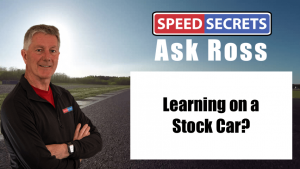 Q: “I’m driving a 2010 Cayman S with stock suspension, street tires, stock brakes (race pads for DEs). I’m told this is a great way to learn. Do you agree? Why or why not?”
Q: “I’m driving a 2010 Cayman S with stock suspension, street tires, stock brakes (race pads for DEs). I’m told this is a great way to learn. Do you agree? Why or why not?”
A: I agree! Your Cayman should have just the right level of performance to keep you on your toes, but not so much that you’re hanging on for dear life! A Cayman is well balanced, so that’s a good thing; you can focus on developing your skills, rather than making up for a handling problem. With stock suspension, the car moves (pitch, roll, yaw) enough that you can feel the results of what you do with the controls. With upgraded suspension and tires, often the car becomes so knife-edge that by the time you sense that you’ve upset the car’s balance, it’s too late – you’re spinning.
As for brake pads, this is the one place that I’d recommend upgrading to a high-performance pad (and brake fluid). They won’t take any feel away, but will make them last longer and be more reliable. This is a safety issue.
Learning is all about finding out what your control applications (turning the steering wheel, applying and releasing the brake pedal and throttle, shifting) do to the car, and with some cars the limits are so high that you need to be very, very fast to feel this. This means you may not drive close enough to the limit to ever truly learn what you’re making the car do, or not do. And if you do drive fast enough to get to that high limit, the risk level is very high.
Drivers learn much more with a lower-performance car than a super-high-performance one. If the limits are so high that a driver won’t go near them, they’re not learning as much.
The old saying applies here: It’s better to drive a slow car fast, than a fast car slow.
